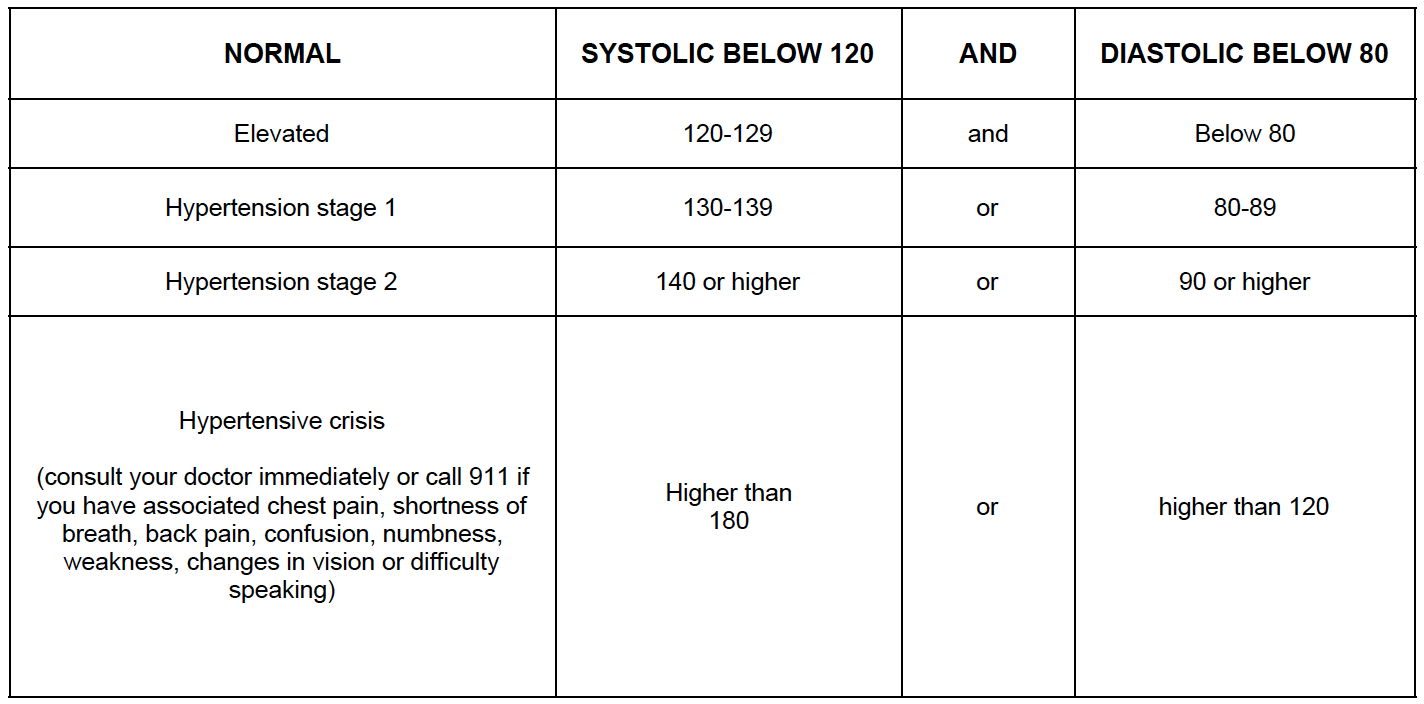

Those numbers previously corresponded to the category of hypertension stage 1.


Diastolic blood pressure (the lower number) - indicates how much pressure your blood is exerting against the artery walls while the heart is resting between beats.Systolic blood pressure (the upper number) - indicates how much pressure your blood is exerting against the artery walls when the heart beats.The blood pressure is measured with two numbers:(4) High blood pressure is a common condition in which the long-term force of the blood against the artery walls is high.(1) Hypertension (high blood pressure) affects 1 of 3 adults or about 75 million people in the United States.(2) This condition is related to the increase risk for heart disease and stroke, two of the leading causes of death in the United States.(3) High blood pressure is called the “silent killer” because it often has no warning signs or symptoms, and many people do not know they have it. What hypertension is and what the numbers mean But let’s start with the basics and review what hypertension is. In this article, I would like to provide a summary and highlight of the new guidelines, while discovering what the changes mean to the dental professional. The categories of prehypertension, hypertension stage 1, and hypertension stage 2 have also changed.

Previously, normal was under 140/90 mm Hg. The guidelines, in a nutshell, state that normal blood pressure is under 120/80 mm Hg. In December 2017, the American Dental Association (ADA) reported the AHA and ACC updates. In November 2017, the American Heart Association (AHA) and American College of Cardiology (ACC) released a new clinical practice guideline on hypertension.


 0 kommentar(er)
0 kommentar(er)
